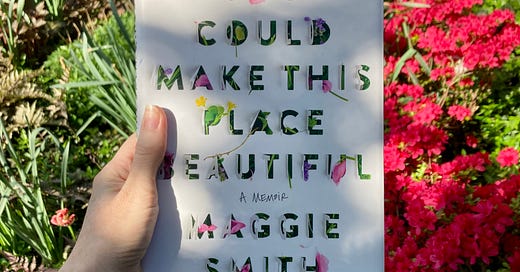In an interview with the LA Review of Books, poet and author
said,“The role of the poet, what our job is, is keeping people’s eyes open and noticing things. It is also to articulate things that are hard to articulate in any other way, shape, or form, which is what gives you that delicious click when you’re reading a poem. You don’t even know why it makes sense to you and why it makes you feel the way you do; something just happens when you read that perfect, apt metaphor. The image is just right, and you think, Yes, that’s the thing. You want to text it to someone or retweet it or share it with a friend or buy the book for someone. It’s that seeing, I think, that makes that click possible. That’s what we’re all chasing, right? We’re all chasing the click.”
The click! I felt it when I read this. To me, the click is that “it factor” that speaks so deeply to us as readers. The click is what earns our underline. It’s what summons our, “Yes!” We might send it to a friend, scribble it on a sticky note for the fridge or the mirror, or even consider making it our next tattoo.
The click is powerful. So how do we, as writers, create it in the reading experience?
To me, the click requires two things:
1. Recognition
2. Discovery
To grip us at its fullest, writing needs both recognition and discovery in equal parts. Great writing articulates by name what we previously only sensed by language-less intuition. That’s the power of recognition: it offers a name and a frame, to which readers can say, “Yes! That’s it.”
But naming what is familiar is not enough. The brain ignores and skips over information that is familiar. Writing that earns the click must also invoke discovery by giving fresh delivery to that which has always been true. When the brain encounters novelty, it releases dopamine, known as the happy hormone or the pleasure hormone. When your brain encounters the click, its neurons fire and spark, creating a biological lightbulb moment—and don’t we love those!
The click is what we’ll be studying in our close reading of Maggie Smith’s memoir, starting next week.
Spring Seasonal Intensive Kicking Off April 23rd!
This month marks eight years of Slant Letter, and now for the first time you can take our work deeper by becoming a paid subscriber. Close readings are one of my favorite things to do and I’m so excited to kick-off our Spring Seasonal Intensive with a close reading of
’s You Could Make This Place Beautiful. This is an offering for paid subscribers, and I hope you’ll consider joining us.This is your reminder to get your copy and start reading! You don’t have to read the book to glean from the close reading, but those who do will certainly have the greatest benefit. Plus we love to support authors by buying their work!
What Is a Close Reading?
If a writer puts words to page with “something to say,” a close reading is a slow reading that attends to both that “something” (interpretation and meaning) and how it is “said” (style and voice). Simply put, it is a method of literary interpretation.
In our close readings together, we read a text as readers, but also as writers—holding up a magnifying glass to how a piece uses voice, style, story craft, and structure. We read with an eye toward why writing works, and how we can transplant those principles of the craft to work for us in our own writing.
You might think of it as a writer’s book club. You can check out previous close readings we’ve done together here and here.
Spring Intensive Preview
You Could Make This Place Beautiful is a poet’s memoir told in vignettes. The New York Times calls it “a meta-dissection of the act of writing” and also "a “murder inquiry, an attempt to answer questions that themselves are hard to articulate. What happened? Why did it happen?”
Part of why I chose this for our close reading is because the author’s play with form is so fearless and inventive. She breaks many conventional rules, and like any great caper, she’s able to pull it off because she first understands the rules before attempting to break them.
Here’s a preview of what we’ll be covering together in the weeks ahead—our syllabus, if you will. We’ll take it week by week and give a proper deep dive to each:
1. The Art of the Caveat
2 . Details that Tell, Details that Move
3. Writing about Writing: The Thrills and the Trade-offs
4. Metaphor: What Makes It Work
5. The Power of Wordplay: A Case Study
6. “Stetting the Tears”: Writing About Pain
7. “The Flickering Is Yours”: Final Thoughts
Get your book and join us by becoming a paid subscriber here!
Now a question for you: When was the last time you experienced “the click”? Even better if you can quote it here in the comments so we can too!
Take heart and stay feisty,
If you’ve found something that speaks to you here
Please share it, restack it, or forward to a friend. This letter is this editor's off-hours labor of love. Your word of recommendation is how our kindred community grows.







The click---this line from Wonder Woman by Ada Limón:
"She bowed and posed like she knew I needed a myth—a woman, by a river, indestructible."
Like she knew I needed a myth. Gah, Ada! It's stayed with me.
Excited for writer's book club---now I'm imagining a live dream scenario of this in a cozy library or a garden or whatever mood matches the book...can we make that happen someday? ;)
It’s one of my favorite books of the past five years. I read it quickly first, and then again and again to study her craft. Of course you love it too 🥰